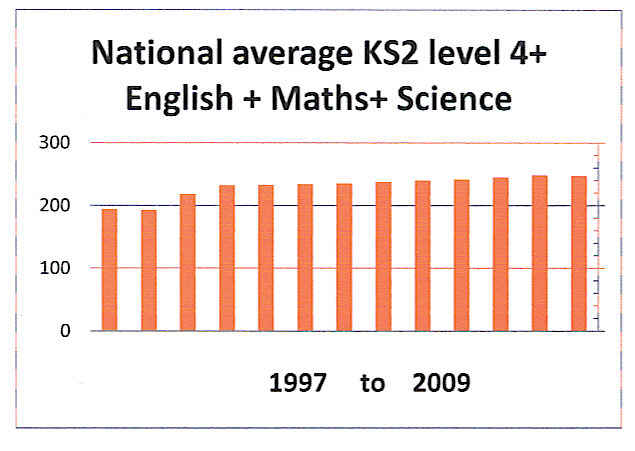|
Sats Testing Originally Was Valuable ...When Professor Paul Black (of King’s College London) and his Task Group on Assessment and Testing (TGAT - set up by Kenneth Baker, Secretary of State for Education and Science) developed the idea of SATs originally in 1987, they called them Standard Assessment Tasks. Seven year olds – and their teachers – first engaged with these tasks in 1991. They were initially fun for the children, if arduous and time consuming for the teachers, but the enormous achievement was that, over the next few years, every primary school teacher in the country learned the value of effective assessment and how it facilitates the progression of learning. Some teachers had always known this, but the result of it being introduced nationally by the Education Reform Act of 1988 meant that every teacher became trained in assessment: it was the greatest achievement of that Act. TGAT introduced the concept of levels of achievement, from 1 to 10, which pupils would move through from age 5 to age 16, with national assessments being made at ages 7, 11, 14 and 16. This scale was defined as a straight line progression from level 2 for the average 7-year-old in each subject, to the boundary between levels 6 and 7 for the average 16-year-old. TGAT recognised that there were difficulties in relating this to GSCE grades and shortly the testing was restricted to ages 7, 11 and 14 and the scale was only normally used in terms of levels 1 to 8. (At present – January 2009 – these assessments are made by pupils’ own teachers, using government-supplied materials, at age 7 (English and mathematics), age 11(English, mathematics and science) and 14 (English, mathematics, science and other foundation subjects); externally marked assessments now only occur at age 11 – in English, mathematics, and science.) ... but Government Moved the Goal-postsBut thereafter governments, both conservative and labour, steadily changed the TGAT system. Whereas TGAT had said ‘the average expectation for an age 11 pupil will be level 4’ (paragraph 108), the word ‘average’ was quietly dropped by government and level 4 became the expectation for all pupils. SATs were renamed Standard Attainment Tests and more recently changed again to National Curriculum Tests (but nobody outside the Department seems to use the term!) TGAT recommended strongly that the results of national assessment for an individual school should only (one of the few words underlined in the report) be published ‘as part of a broader report by that school of its work as a whole’ because there are ‘many factors outside its control that affect its work’. Government rejected this and tables of results were published with numbers naked of context. TGAT recognised that SATs would involve more work for teachers but never envisaged that it would stress children and their parents. Now, year by year, it is reported that schools are increasingly teaching to the test in order to score high and avoid harassment from OFSTED inspections, and in consequence children and their parents are suffering stress. The 2008 report by the House of Commons Select Committee for Children, Schools and Families says:
It is now clear that Government also is stressed by SATs, not only in terms of the Select Committee’s report but by the widely publicised failures of agencies responsible for marking SATs. Saturation Point for Raising StandardsThe chart below shows the combined national results for KS2 assessments in English, mathematics and science for the years 1997 to 2009. If every 11-year-old child in England had reached level 4 in each subject the height of the bars would be 300. That is what the Government 'expects'. In practice, notwithstanding enormous pressure put on primary schools the nation’s children are levelling out at just below the 250 mark. It is recognised by teachers (and most parents), but not by politicians, that children develop at different rates, and it may well be that an average score of between 200 and 250 represents the optimum score for the population of our children aged around eleven. Give them say another year of good primary schooling, or careful support in the first year of secondary school, and they will nearly all reach the 300 mark, ie achieve Level 4+ in all three subjects by around age twelve. As noted above, it needs to be remembered that when in 1987 TGAT developed the system of levels, Level 4 was to be the The familiar defence of testing is that it drives standards up. The evidence here suggests that SATs have reached saturation point. Enough is enough! 
Click on the following line to read the seven arguments Seven Alleged Government Arguments for SAT Assessment are Refuted HereThis page was amended on 20 April 2010 |